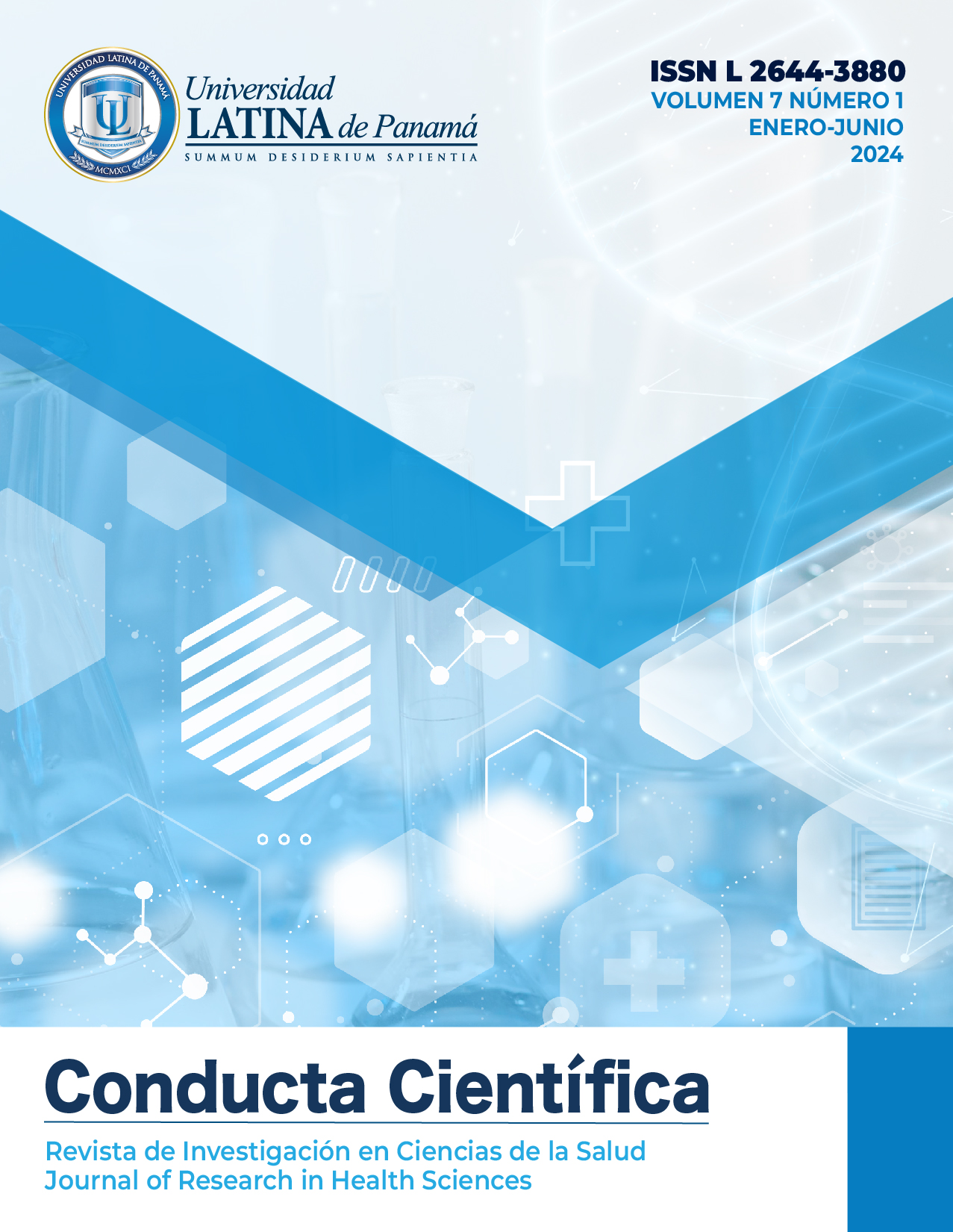ACADEMIC ACHIEVEMENT AS A DETERMINING FACTOR IN ANXIETY FROM LEARNING A SECOND LANGUAGE
Palabras clave:
Engagement, anxiety, second language, psychologyResumen
Introduction: Panamanian law #2 from 14th of January 2003 makes teaching English at school from 1 to 12th grade mandatory (Asamblea Nacional, 2003, p.1), but studies found a significant percentage of college applicants lacked the necessary language skills (Guadamud, 2019) (Kaur, 2020). Objective: This study focuses on academic achievement and its relationship with anxiety from learning a second language. Method: This is explored from the theoretical framework of Coello y Cachón (2017), which define “academic achievement” as grades plus student engagement. This experiment adopts a structure inspired by Phillips findings (1992) correlating a negative relationship between grades and anxiety from second language, but focusing in engagement instead. Control and experimental groups were exposed to a 1-hour English language workshop. The control group followed the book guidelines, while the experimental group followed the ESA model (Engage, Study, Activate). Both groups filled engagement (UWES-S-9) and anxiety (FLCAS) inventories. Results: This failed to reveal any statistically relevant Pearson correlations between engagement and anxiety (r=-0.307) (p=0.266). Comparing the mean engagement results between the post-test of both experimental and control groups showed negligible differences between each other de 39.12 y 38.14, which fall within the 2.24- 2.82-point margin of error. Anxiety results behaved similarly between groups with mean scores of 91. 12 and 93.14. Conclusion: The engagement results suggest that the experimental stimulus failed at inducing any engagement changes compared to the control group. These results could be due to a number of affecting variables such as the small sample size, insufficient mastery over the experimental stimulus from the research team or the very nature of the stimulus requires exposure over a longer period of time before it takes effect, making a single session model ineffective. Inconclusive though they might be, the resulting negative correlation leaves room for more thorough experimentation.
Citas
Asamblea Naciona. (2003, January 14th ). Ley que establece la ense;anza obligatoria del idioma inglés en los centros oficiales y particulares del primer y segundo nivel de ense;anza y dicta otras disposiciones. UNIACHI. Retrieved from: https://www.unachi.ac.pa/assets/descargas/vic_academica/2-de-2003-jan-16-2003.pdf
Benevides-Pereira, T., M., de Camargo, F., Porto-Martins, D., Paulo, C. (2009). Escala Utrecht de Engagement en el Trabajo: Introducción a la primera versión al español. GEPEB. Retrieved from: https://www.wilmarschaufeli.nl/publications/Schaufeli/Test%20Manuals/Test_manual_UWE S_Espanol.pdf
Chimbolema Cepeda., D. W. (2019). El método “Engage-Study-Activate (ESA)” en el desarrollo de la destreza oral del idioma inglés. (Trabajo de grado de licenciatura) Repositorio Digital UCE. Retrieved from: https://www.dspace.uce.edu.ec/entities/publication/43cc1b54-58d0-4588-a6ab- 406120c803fc
Coello, Y., & Cachón, C. (2017). El desempeño académico a partir de la implicación de los estudiantes. Congreso Nacional de Investigación Educativa. Retrieved from: https://www.comie.org.mx/congreso/memoriaelectronica/v14/doc/0937.pdf
de la Villa Moral-Jiménez, M. (2015). Dificultades de inserción sociolaboral de los jóvenes. Comité Editorial, 73. Retrieved from: https://www.researchgate.net/profile/Maria-De-La-Villa Moral/publication/306181667_Dificultades_de_insercion_sociolaboral_de_los_jovenes_contempo raneos_el_sindrome_de_Alicia/links/57b338e308aeac3177848faa/Dificultades-de-insercion- sociolaboral-de-los-jovenes-contemporaneos-el-sindrome-de-Alicia.pdf#page=75
Fithria, M., & Ratmanida, R. (2019). Using ESA (engage, study, activate) method for improving students’ speaking ability at junior high school. Journal of English Language Teaching, 8(1), 160-166. Retrieved from: https://ejournal.unp.ac.id/index.php/jelt/article/view/103349
Guadamud, Pamela. (2019). Dificultades en el aprendizaje del idioma inglés en la licenciatura en educación primaria en el centro regional universitario de Panamá Oeste. Repositorio Instiruional Digital de la Universidad de Panama. (Master’s dissertation) Retrieved from: http://up- rid.up.ac.pa/3326/3/pamela_guadamud.pdf
Hewitt, E., & Stephenson, J. (2012). Foreign language anxiety and oral exam performance: A replication of Phillips's MLJ study. The Modern Language Journal, 96(2), 170-189. Retrieved from: https://onlinelibrary.wiley.com/doi/abs/10.1111/j.1540-4781.2011.01174.x
Horwitz, E. K., Horwitz, M. B., & Cope, J. (1986). Foreign language classroom anxiety. The Modern language journal, 70(2), 125-132. Retrieved from: https://www.jstor.org/stable/327317
Ikhrom, R. & Fadlilah, S. (2018). The improvement of English skills for Islamic junior high school teachers using ESA (engage study activate) approach. KONTRIBUSIA, 1(1), 1-6. Retrieved from https://journal.umg.ac.id/index.php/kontribusia/article/view/249
Katz, L. (2000). Public speaking anxiety. UTM Counseling and Career Services, 1, 1-3. Retrieved from: https://www.columbiastate.edu/faculty-pages/louise-katz/publicspeakinganxietypamphlet.pdf
Kaur, H. (2020). Diagnóstico de las habilidades y necesidades específicas del idioma inglés según carrera de los alumnos de la Universidad UDELAS. redes, 1(12), 96-116. Retrieved from: https://revistas.udelas.ac.pa/index.php/redes/article/view/119
Odell, L., Vacca, R., Hobbs, R., Irvin, J & Warriner, J. (2007) Elements of Language (pp. 401-404, 439- 443). Austin, TX: Holt.
Phillips, E. M. (1992). The effects of language anxiety on students' oral test performance and attitudes. The Modern Language Journal, 76(1), 14-26. Retrieved from: https://www.jstor.org/stable/329894?searchText=Phillips+1992+anxiety&searchUri=%2Faction%2FdoBasicSearch%3FQuery%3DPhillips%2B1992%2Banxiety&ab_segments=0%2Fbasic_search _gsv2%2Fcontrol&refreqid=fastly-default%3A953e2b6aec32b36b7ca613d160d34138
Portalanza-Chavarria, C. A., Grueso-Hinestroza, M. P., & Duque-Oliva, E. J. (2017). Propiedades de la Utrecht Work Engagement Scale (UWES-S 9): análisis exploratorio con estudiantes en Ecuador. Innovar, 27(64), 145-156. Retrieved from: http://www.scielo.org.co/scielo.php?script=sci_abstract&pid=S0121-50512017000200145&lng=e&nrm=iso&tlng=es
Ramos, M. G., García, M. G. O., & Cueto, M. D. C. H. (2016). Validación y confiabilidad del “Foreign Language Classroom Anxiety Scale” (FLCAS) en el idioma español hablado en México y aplicado a estudiantes mexicanos. EDUCATECONCIENCIA, 12(13), 40-49. Retrived from: https://tecnocientifica.com.mx/educateconciencia/index.php/revistaeducate/article/view/180
Torres, G., De León, L. V., & Britton, A. (2018). Análisis de los problemas que influyen en el aprendizaje del idioma inglés en los estudiantes de sexto grado en la provincia de Panamá. Revista de Iniciación Científica, 4, 119-121. Retrieved from: https://revistas.utp.ac.pa/index.php/ric/article/view/1833
Descargas
Publicado
Cómo citar
Número
Sección
Licencia
El contenido de las publicaciones son responsabilidad absoluta de los autores y no de la Universidad ni de la revista Conducta Científica, que es editada por la Universidad Latina de Panamá. La revista permite a los autores mantener el derecho de autor sobre los articulos y documentos publicados mediante el uso de la siguiente licencia.
Los artículos se publican con una licencia https://creativecommons.org/licenses/by-nc-sa/4.0/deed.es
Bajo los siguientes términos:
-
Atribución — Usted debe dar crédito de manera adecuada, brindar un enlace a la licencia, e indicar si se han realizado cambios. Puede hacerlo en cualquier forma razonable, pero no de forma tal que sugiera que usted o su uso tienen el apoyo de la licenciante.
-
NoComercial — Usted no puede hacer uso del material con propósitos comerciales.
-
CompartirIgual — Si remezcla, transforma o crea a partir del material, debe distribuir su contribución bajo la misma licencia del original.



